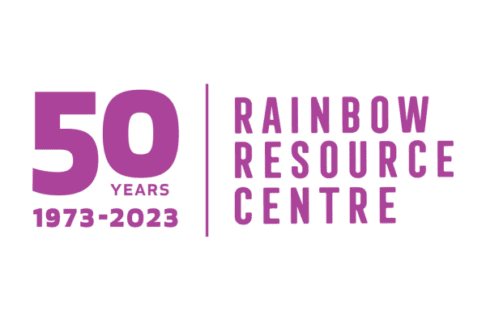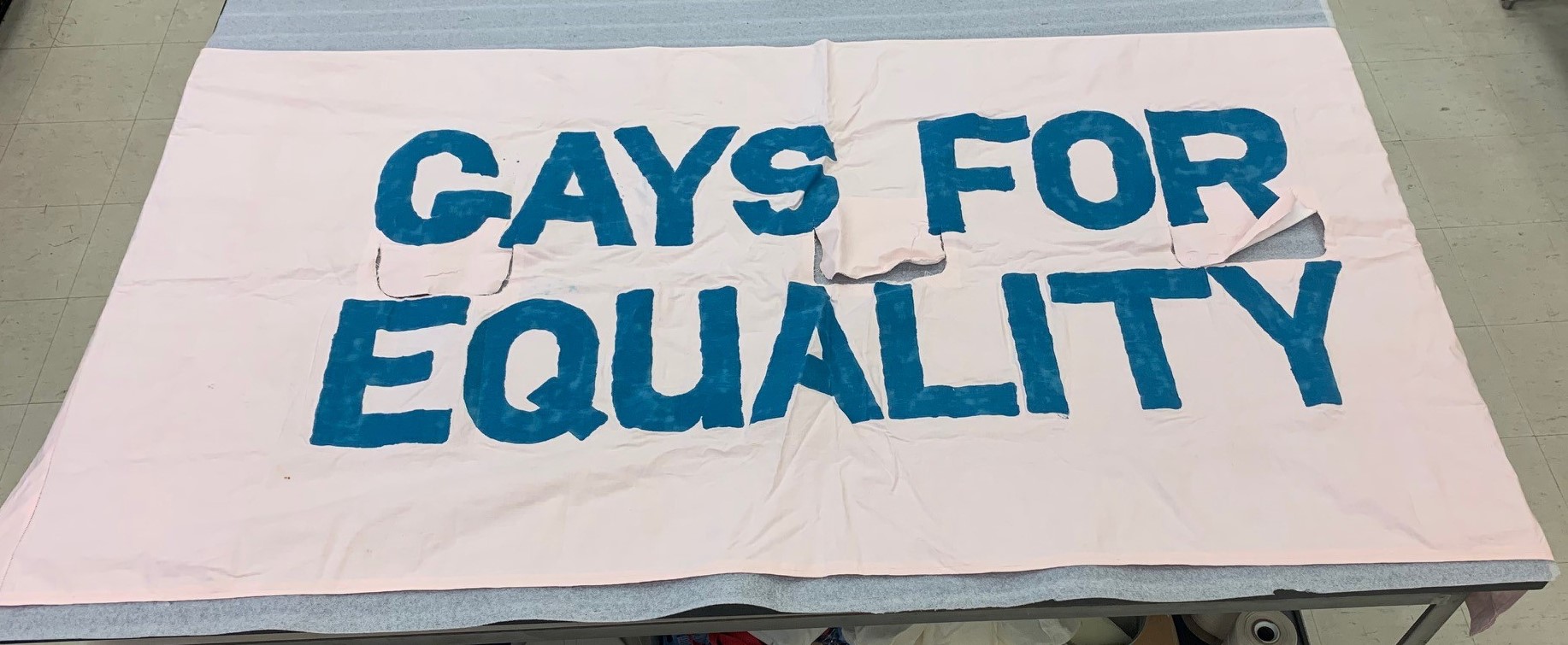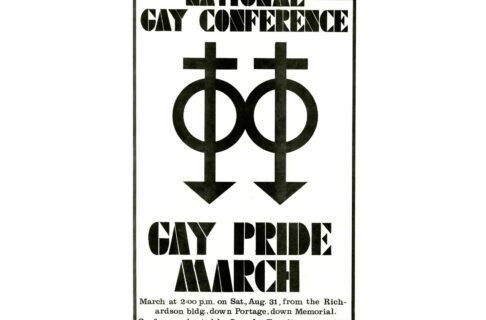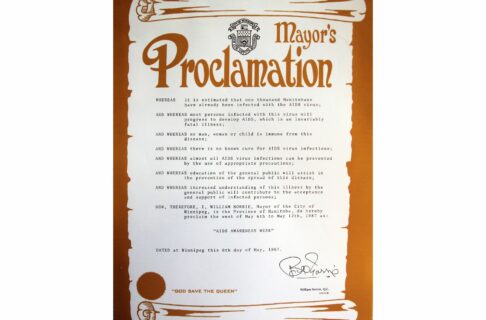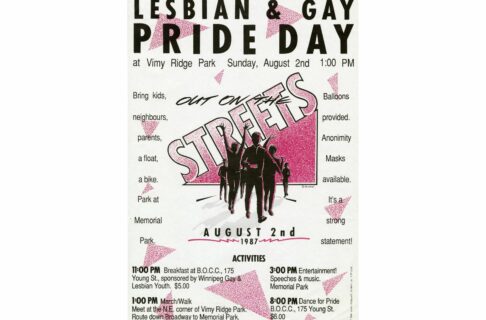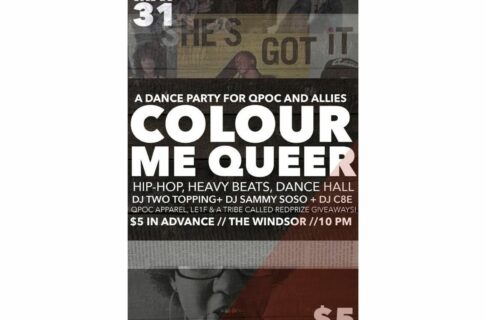By Roland Sawatzky, Curator of History, the Manitoba Museum & Ashley Smith, Director of Advocacy, Rainbow Resource Centre
Two-spirited, lesbian, gay, bisexual, transgender, and queer (2SLGBTQ+) people have always lived in Winnipeg, and were and are an essential part of the fabric of our urban society. 2SLGBTQ+ communities have a rich history. The Manitoba Museum is proud to partner with Rainbow Resource Centre to help tell this important community story through this temporary exhibition of posters, which opened on May 26.
Museums are a place of artifacts and stories. Some artifacts, such as posters, seem ephemeral when they are first printed and put up on a wall. They are meant for immediate effect – they “talk” to casual passersby, but only for a few weeks before they disappear. Posters that are actually preserved make excellent artifacts for capturing a single moment in time.
The 20 posters showcased in the new exhibit If These Walls Could Talk: 50 Years of 2SLGBTQ+ Activism in Winnipeg capture the issues and concerns of the community from the early 1970s to the present. They are calls to action to advance and protect the rights of individuals in the community.
From the first simple sign – Gays for Equality, from 1973 – a call went out for gathering and representation at the University of Manitoba. In 1978 a poster called for gays and lesbians to “COME OUT” and speak up for human rights and to end discrimination, and protest the anti-gay rights activist Anita Bryant who was speaking in Winnipeg. In 1980 a poster protested the banning of gay books – an issue that still resonates today. During the HIV/AIDS pandemic of the mid-1980s-1990s, 2SLGBTQ+ communities suffered devastation, and rights became a matter of life and death. Posters were used to spread useful information and support for those at risk. Into the 2000s, posters promoted equality of marriage, anti-bullying measures, and transgender rights.
In 1987, Manitoba became Canada’s third province to include sexual orientation in its Charter of Rights and Freedoms – later celebrated as the first Pride on August 2 of that year. 2SLGBTQ+ activism was central to this and many other freedoms for Manitobans, and these posters tell the story of the fight for those rights, of how far the community has come, and also how much is at risk of being lost today.
Fun Fact!
The Rainbow Flag was first created in 1978 by Gilbert Baker, a gay man and drag queen from California. Harvey Milk, an openly gay city supervisor in San Francisco, had urged Gilbert to make a symbol of pride for the larger gay community. Over the years it has evolved to include more colours, representing diversity within the 2SLGBTQ+ community!
If These Walls Could Talk is produced in partnership with the Rainbow Resource Centre, and funded in part by the Manitoba Government, Department of Sport, Culture, and Heritage.
